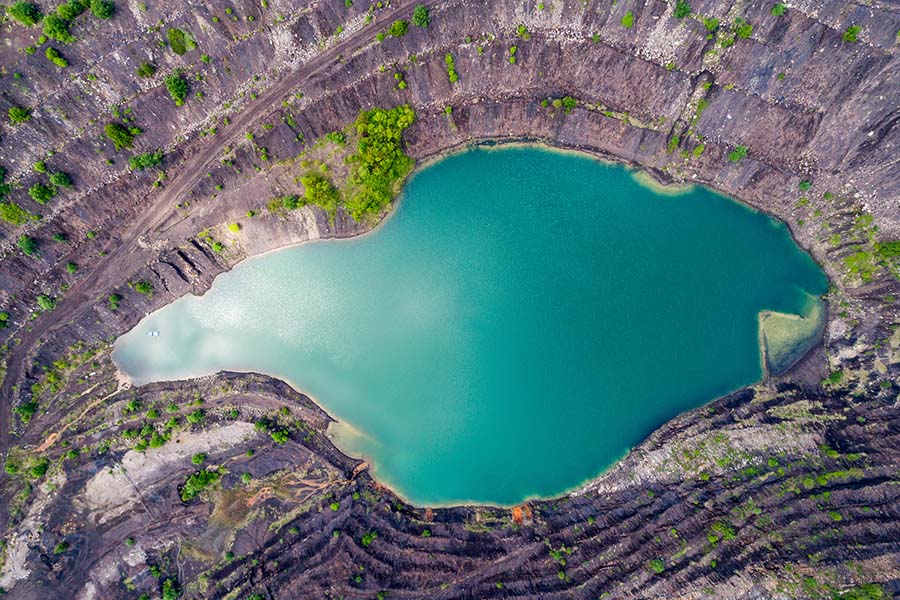Article Center
Signs a Project Will Need Geosynthetics
While geosynthetics do offer a lot of benefits for large grading and earth moving projects, they’re not always required by every design.
What Materials Are Used for Making Geosynthetics?
As with functions and characteristics, many geosynthetics also share common material composition.
How to Choose the Right Geosynthetics for a Project
With an umbrella term, covering so many distinct types of products with very different purposes and features, it’s easy to get confused and mistake one type of geosynthetic for another.
The Five Main Functions of Geosynthetics
Regardless of the type of material, all geosynthetics provide at least one of the following five major functions.
What are Geosynthetics?
Geosynthetics are defined as polymers shaped into planar materials for the purposes of reinforcing and improving soil conditions.
The Challenges of Industrial Wastewater Containment
Industrial and mining wastewater, in particular, is some of the harshest and most corrosive material in need of storage.
What to Look for in Wastewater Containment Liners
While geomembranes may offer the best combination of durability and flexibility for wastewater containment, they’re not all equally suited for this particular use.
Tanks vs Ponds for Wastewater Storage and Containment
Most wastewater management projects involve a mix of different holding units depending on which stage of treatment or storage is needed.
Wastewater Containment, Treatment, or Storage?
There is a lot of overlap between the various goals of storing, containing, and treating wastewater.
Material Selection for Wastewater Containment
All projects involving short- or long-term exposure to water require durable materials.
Containment Methods for Wastewater and Runoff
Containment for wastewater, especially hazardous materials, goes beyond just holding it in a simple tank or lined pond.
Which Industries Produce the Most Wastewater?
Wastewater is generated by dozens of different industries on a daily basis.
The Various Risks of Wastewater
While wastewater is often a valuable source of moisture for irrigation or other purposes, it also poses a wide range of hazards.
Maintenance Requirements for Floating Covers
The marketing materials of alternative cover options like floating ballasts may convince you that geomembrane floating covers require a lot of maintenance.
Material Options Available for Floating Pond Covers
Approving the use of a floating cover made from geomembrane for your project isn’t the only step in design or selection.
Ponds with Floating Covers vs Concrete Vaults and Solid Tanks
If digging and lining a pond sounds like a lot of work, it’s also possible to choose pre-formed vaults and tanks to hold fresh water or waste products.
Solid Geomembrane Floating Covers vs Ballast Balls and Plates
The majority of covered ponds and lagoons in use today are covered with a system known as the defined sump/tensioned plate design.
What Other Equipment is Needed for a Geomembrane Floating Cover?
Geomembranes certainly work well as floating covers, especially when built with the right materials from the start.
Clean vs Wastewater Cover Requirements
While there are dozens of potential, unique uses for floating covers made from geomembranes like RPE, most of them can be easily sorted into the categories of fresh and wastewater storage.
Where are Floating Covers Needed the Most?
With such a wide range of uses and potential benefits, it’s not surprising that floating covers are installed on ponds and tanks in dozens of different industries.
All About Floating Covers
Floating covers for reservoirs and lagoons are often compared to the simple solar or winter covers used on backyard pools.
Protecting Penetrations Through Mining Geomembranes
Between drains, pumps, plumbing and maintenance ports, mining ponds often feature multiple penetrations through the sides and bottom of the geomembrane liner.
Raincoat Liners for Mining Heaps
In addition to protecting the ground from seepage with buried liners, mining facilities need to consider stopping rain from infiltrating heaps of raw material.
Geomembranes for Mining Evaporation Ponds
Evaporation ponds are widely used throughout the various branches of the mining industry.



























